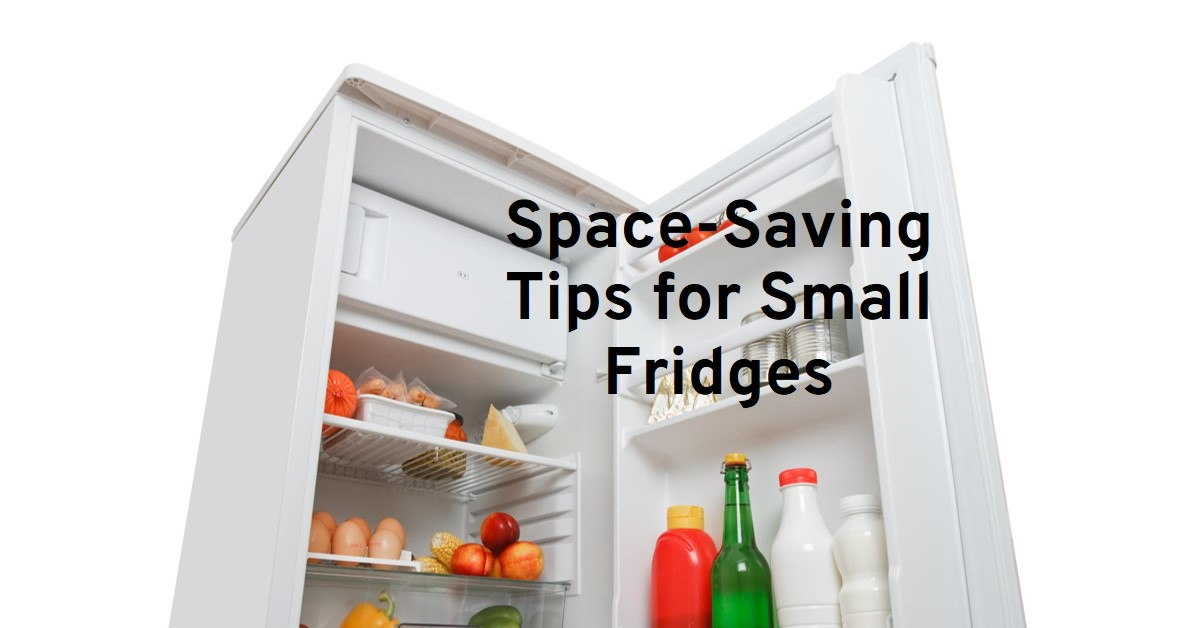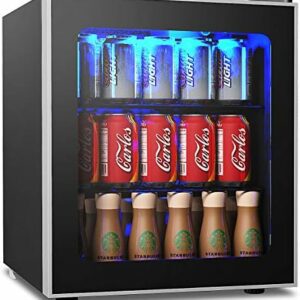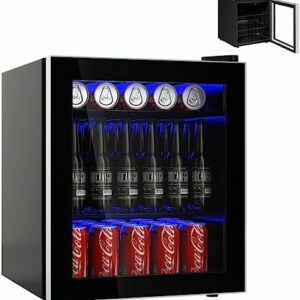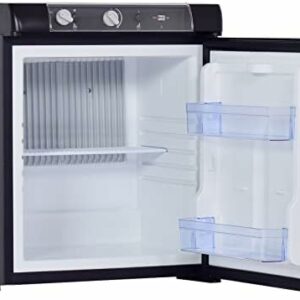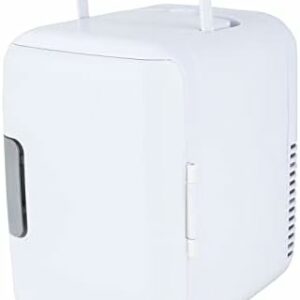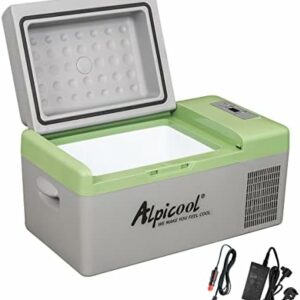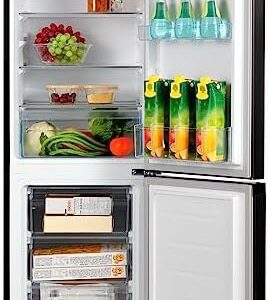To make the most of a small fridge, organize items efficiently and use storage containers wisely. Utilize vertical space and keep items visible for easy access.
With strategic planning, you can maximize storage capacity and keep your small fridge neat and organized. By implementing these tips, you can optimize space, reduce food waste, and make the most of your limited fridge space. Whether you're a college student in a dorm or living in a small flat, these simple strategies will help you make the most out of your small fridge.
Let's explore some practical ways to efficiently utilize your small fridge space and maintain a clutter-free refrigerator.
Maximizing Storage Space
When dealing with a small fridge, maximizing storage space is key to keeping your food organized and accessible. By employing smart strategies, you can make the most out of limited fridge space. Let's explore some effective ways to optimize storage in your compact refrigerator.
Organizing Items Efficiently
Categorize your food items into groups like dairy, fruits, vegetables, and condiments for easy access.
- Use clear containers to store leftovers and small items, making it easier to see what's inside.
- Label shelves to designate specific areas for different types of food, ensuring everything has its place.
Utilizing Door Space
Maximize door space for items like sauces, dressings, and beverages that can be stored on the shelves attached to the door.
- Invest in door bins that can hold small items such as spices, packets, and small jars, utilizing every inch of space.
- Avoid storing perishables on the door, as temperature fluctuations can affect their freshness.
Optimizing Fridge Organization
Using Storage Bins And Baskets
Utilizing storage bins and baskets can make a significant difference in maximizing the space in a small fridge. Grouping similar items together in bins and baskets not only helps keep the fridge organized, but also makes it easier to locate specific items. Additionally, using clear bins and baskets allows for easy visibility of the contents, preventing items from getting lost or forgotten at the back of the fridge. By utilizing vertical space with stackable bins, it is possible to create additional storage and make the most of limited shelf space.
Arranging Items By Frequency Of Use
Arranging items in the fridge based on their frequency of use is a practical approach to optimizing fridge organization. Placing frequently used items at eye level ensures easy access and reduces the need to rummage through the fridge. Items that are used less frequently can be stored on higher or lower shelves, making the most of the available space. By rotating items and ensuring that older products are used first, it is possible to minimize food waste and maintain a well-organized fridge.
Minimizing Wastage And Spoilage
Properly Sealing Leftovers
Properly sealing leftovers can extend their freshness and minimize wastage. Ensure to use airtight containers or zip-lock bags to seal your leftovers. Label the containers with the date to keep track of their shelf life. This simple practice can help you maximize the use of your small fridge space and reduce food spoilage.
Understanding Shelf Life Of Products
Understanding the shelf life of different products is crucial in minimizing wastage. Keep a list of perishable items and their typical shelf life in the fridge. For example, dairy products like milk and cheese have a limited shelf life, while vegetables and fruits can last longer if stored correctly. By understanding the shelf life of your groceries, you can plan your meals and consume items before they expire.
Utilizing Multi-functional Tools
Using Fridge-safe Containers
Fridge-safe containers help in organizing food items efficiently. Opt for stackable containers to maximize fridge space.
Maximizing Vertical Space With Stackable Trays
Stackable trays allow you to make the most of vertical space in your fridge. Consider transparent trays for easy visibility.
Innovative Food Storage Techniques
Discover innovative food storage techniques to optimize a small fridge space efficiently. Utilize stackable containers, vacuum-sealed bags, and adjustable shelves for organized storage solutions. Maximize freshness and minimize clutter with smart storage strategies.
Freezing Fresh Herbs In Ice Cubes
Storing Vegetables In Humidity-controlled Drawers
Creative Space-saving Solutions
If you have a small fridge, you know how challenging it can be to make the most of the limited space. However, with some creative space-saving solutions, you can maximize every inch of your fridge and keep your food organized and accessible. Here are some innovative ideas to help you optimize the space in your small fridge.
Hanging Magnetic Spice Racks
One ingenious way to free up space in your small fridge is by using hanging magnetic spice racks. These racks can be attached to the side or front of your fridge, making use of the often overlooked vertical space. By storing your spices in magnetic containers on the fridge, you can free up valuable shelf space for other items. This not only keeps your spices within easy reach but also adds a decorative touch to your kitchen.
Utilizing Under-shelf Baskets
Another space-saving solution for a small fridge is to make use of under-shelf baskets. These wire or plastic baskets can be attached underneath the existing shelves in your fridge, creating additional storage space for small items such as condiment bottles, eggs, or deli meat. By utilizing the vertical space under the shelves, you can keep your fridge organized and make the most of every inch of available space.
Maintaining Optimal Temperature Zones
Having a small fridge can be a challenge, especially when it comes to storing different types of food. However, with a bit of planning and organization, you can make the most of your limited space. One of the key factors in maximizing the storage capacity of a small fridge is maintaining optimal temperature zones. In this article, we will explore how you can achieve this by understanding fridge temperature settings and creating zones for different food types.
Understanding Fridge Temperature Settings
The first step in maintaining optimal temperature zones is to understand the temperature settings of your fridge. Most fridges have a temperature control knob or digital display that allows you to adjust the temperature. The ideal temperature range for a fridge is between 35 °F (1.67 degrees Celsius) and 38 °F (3.33 degree Celsius).
It is important to note that different areas of the fridge may have different temperature zones. The coldest part of the fridge is usually the back and bottom, while the door and top shelves are typically warmer. It is best to store perishable items like meat, dairy, and eggs in the coldest part of the fridge to ensure they stay fresh for longer.
Creating Zones For Different Food Types
Creating temperature zones for different food types is essential for maintaining the quality and freshness of your food. Here are some tips to create different zones:
| Zone | Ideal Temperature Range | Food Types |
|---|---|---|
| Top Shelf | 38 °F (3.33 degree Celsius) | Ready-to-eat foods like leftovers, deli meats, and cheese |
| Bottom Shelf | 35 °F (1.67 degree Celsius) | Perishable items like meat, poultry, fish, and dairy products |
| Door Shelves | 40 °F (4.44 degree Celsius) | Non-perishable items like condiments, juice, and soda |
By creating these zones, you can ensure that your food stays fresh for longer and reduce the risk of spoilage. It is also important to keep your fridge organized by grouping similar items and using containers or bags to keep them separate.
With these tips, you can make the most of your small fridge and ensure that your food stays fresh and delicious. By maintaining optimal temperature zones and organizing your fridge, you can save space and reduce waste, while also enjoying your favourite foods.
Regular Maintenance And Cleaning
To maximize a small fridge's space, prioritize regular maintenance and cleaning. Wipe spills promptly, organize items efficiently, and check for expired products weekly. Keep shelves clutter-free for easy access, and ensure optimal cooling by defrosting regularly.
Regular maintenance and cleaning of your small fridge is essential for optimal performance and cleanliness. Here are some key tasks to keep your fridge in top condition: Defrosting Regularly One crucial aspect of maintaining a small fridge is defrosting it regularly. This prevents ice build up and ensures efficient cooling. Schedule defrosting every few months to keep your fridge running smoothly. Cleaning Spills and Removing Expired Items Spills and expired items can lead to odours and bacterial growth. Clean spills immediately with a mild detergent and warm water. Regularly check for expired items and discard them to free up space and maintain freshness. Remember, regular maintenance and cleaning are key to making the most of your small fridge!
Small Fridges you may like:
Small Fridge Freezers you may like:
Frequently Asked Questions
How To Maximize A Small Fridge?
Maximize a small fridge by organizing items efficiently, using stackable containers, utilising door space, and rotating perishables. Keep it clean and decluttered for optimal storage.
How Do You Make The Best Use Of A Small Fridge?
To make the best use of a small fridge, organize items efficiently, use stackable containers, and label everything. Maximize space with fridge organizers and utilize the door for condiments. Keep it clean to prevent odours and regularly check for expired items.
How To Fit The Most In A Mini Fridge?
To fit the most in a mini fridge, follow these tips: 1. Use small containers and bags to maximize space, 2. Organize items by size and shape, 3. Place items with the shortest shelf life in the front 4. Avoid overpacking to ensure proper air circulation 5.
Use the door shelves for condiments and small items.
How To Make A Mini Fridge More Efficient?
To make a mini fridge more efficient, keep it well-ventilated, defrost regularly, and set the temperature to the recommended level. Place it away from heat sources and ensure the door seals tightly. Additionally, avoid overloading the fridge and clean the coils regularly for optimal performance.
Maximizing a small fridge is simple with smart organization and storage solutions. From utilizing door space to using stackable containers, small fridges can be efficient. By decluttering regularly and planning meals ahead, you can make the most of your limited fridge space.
